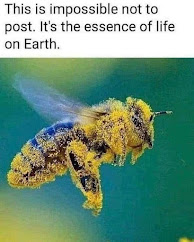The Alarming Decline of Bees and its Implications on our Ecosystem
The Importance of Bees in our Ecosystem
The Factors Causing the Decline of Bees
The Impact of Bee Decline on Agriculture
The Ripple Effect of Bee Extinction on our Environment
What Can We Do to Help Save the Bees?
Bees are an essential part of our ecosystem, but their populations have been declining at an alarming rate in recent years. Their decline is not only a threat to their own survival, but it also has significant implications for the health of our environment and our food systems. In this article, we will explore the importance of bees, the factors causing their decline, the impact of their extinction on agriculture and the environment, and what we can do to help save the bees.
The Importance of Bees in our Ecosystem
Bees play a crucial role in pollinating plants, which is necessary for the reproduction of many crops and plants. According to the Food and Agriculture Organization of the United Nations, around 75% of global food https://rb.gy/ggfffx
crops depend, at least in part, on pollination by bees and other pollinators. Without bees, many fruits, vegetables, and nuts that we rely on for our daily diets would become scarce, leading to food shortages and higher prices.
In addition to their role in agriculture, bees also contribute to the health of our ecosystems by pollinating wildflowers and other plants, which provide food and habitats for other wildlife. Bees are also an important part of the food chain, as they are a source of food for many animals, including birds, insects, and other mammals.
The Factors Causing the Decline of Bees
There are several factors contributing to the decline of bee populations, including habitat loss, climate change, pesticide use, and diseases. The destruction of natural habitats, such as meadows and forests, for human activities like farming and urbanization, reduces the amount of available food and nesting sites for bees. Climate change is also affecting the timing of flowering and pollination, which can disrupt the synchronization between bees and plants, leading to a decline in pollination success.
Pesticides, particularly neonicotinoids, have been linked to the decline of bee populations by impairing their cognitive abilities, navigation skills, and immune systems. Diseases and parasites, such as Varroa mites, have also been a significant cause of bee deaths, as they weaken the bees' immune systems, making them more vulnerable to other threats.
The Impact of Bee Decline on Agriculture
The decline of bee populations has already had a significant impact on agriculture. Farmers are finding it increasingly difficult to pollinate their crops, which reduces yields and quality, leading to lower profits. The cost of pollination services is also increasing as beekeepers struggle to maintain their hives and replace lost colonies.
In some cases, the decline of bee populations has led to the disappearance of certain crops altogether. For example, in China, the shortage of pollinators has forced farmers to pollinate pear trees by hand, which is a time-consuming and expensive process.
The Ripple Effect of Bee Extinction on our Environment
The extinction of bees would have far-reaching consequences beyond agriculture. The loss of pollination services would affect the reproduction of wildflowers and other plants, which provide habitats and food for other wildlife. This, in turn, could lead to a decline in the populations of birds, insects, and other animals that rely on these plants for their survival.
The loss of bees could also affect the quality of the air we breathe. Trees and other plants absorb carbon dioxide from the atmosphere and release oxygen, but they need bees to pollinate them. Without bees, the amount of carbon dioxide will be increase
What Can We Do to Help Save the Bees?
Help Save the Bees
Bees play a critical role in pollinating plants and crops, and their decline in population has become a global concern. Here are some things that individuals and communities can do to help save the bees:
Plant bee-friendly flowers: Planting native flowers, fruits, and vegetables in your garden or backyard is an excellent way to support bee populations. Bees are attracted to a diverse range of flowers, including sunflowers, lavender, and wildflowers.
Avoid using pesticides: Pesticides can be harmful to bees, and their use should be avoided whenever possible. Consider using natural alternatives, such as companion planting, to control pests in your garden.
Support local beekeepers: Buying local honey and other bee products from small-scale beekeepers supports the beekeeping industry and helps maintain bee populations.
Create bee habitats: Providing bee habitats in your backyard, such as bee hotels or nesting boxes, can encourage bee populations to thrive.
Educate others: Spread awareness about the importance of bees and the impact of their decline on the environment. Encourage others to take action and make positive changes to support bee populations.
Advocate for bee-friendly policies: Advocate for policies that protect bees, such as banning harmful pesticides and protecting bee habitats. Contact your local representatives to make your voice heard.
for natural & pure honey click the link









0 Comments